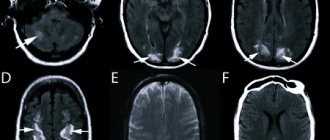If you find an error, please select a piece of text and press Ctrl+Enter.
After you have faced some kind of problem (job loss, serious illness, divorce, financial problems, etc.). You may feel depressed. The same goes for big life changes (marriage, having a child, moving, etc.). You may feel nervous, irritable, sad or anxious.
If you feel this way after any of these stressful events, don't worry, it's completely normal. However, if your symptoms significantly affect your daily life, you may be suffering from adjustment disorder.
It falls under the category of trauma and stress disorders. These are disorders in which exposure to a traumatic or stressful event is explicitly stated as a criterion for diagnosis.
Violations listed in this category:
- Post-traumatic stress disorder.
- Acute stress disorder.
- Reactive attachment disorder.
- Refusal of social activity.
- Regulation disorder.
Psychological distress after a traumatic or stressful event varies from person to person. For some people, symptoms are based on fear and anxiety.
However, many people who have experienced traumatic or stressful situations have symptoms such as moodiness, anger, hostility, or dissociative symptoms.
Because of the variety of symptoms that occur after a traumatic or stressful event, psychologists group the above disorders under the category of “trauma and stress-related disorders.” Some people overcome adverse experiences sooner than others.
If it takes you more than 3 months to adjust to changes and is difficult to recover from, you may have adjustment disorder.
What is adjustment disorder
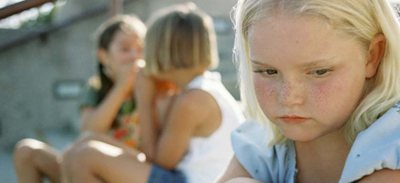
Behavioral and emotional signs may be excessive, having a significant impact on the child's social life. The cause of stress may be a single event that affects only the child, for example, in kindergarten, school, or a family event, for example, the divorce of parents. Multiple simultaneous stressors are also possible. Chronic illnesses of a child or parents can also cause stress.
Meanwhile, adjustment disorder, in a sense, is a reassuring diagnosis. It is considered by many mental health professionals to be one of the least serious mental illnesses. Child adjustment disorder is usually a time-limited condition; the child can completely recover from the problems within six months after the stressor is removed. However, long-term stressors, such as chronic illness or parental divorce, take longer to heal.
Adjustment disorder: demographics
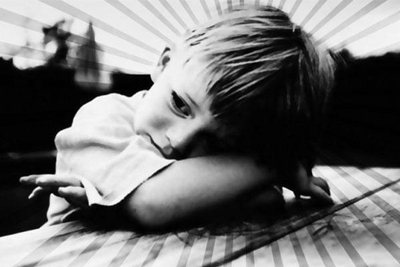
The diagnosis of adjustment disorder is very common among children and adolescents, with higher incidence rates among children than adults. Almost one third (32%) of all children are estimated to suffer from an adjustment disorder during adolescence, in contrast to only ten percent of adults. Differences in adjustment disorder scores between girls and boys have not been determined.
Material and methods
We examined 184 patients with PD whose clinical picture revealed depressive disorders (main group). The control group consisted of 76 patients with PD, in whose clinical picture there were no mental disorders.
In terms of socio-demographic characteristics, the main and control groups had no significant differences, except for the disability indicator: patients in the main group were significantly more likely than in the control group to have permanent disability (64.4 and 41.1%, p
0,05).
A set of methods was used in the work: the psychopathological method, which included an assessment of the patient’s mental state (collection of complaints, anamnesis, study of symptoms, syndromes, their psychopathological interpretation and correlation with the classification characteristics of ICD-10); anamnestic method - the study of the characteristics of physical, psychological and social development, the formation of personal orientations, relationships and their transformation under the influence of the disease; psychometric method using the Unified PD Rating Scale (MDS-UPDRS), Schwab and England Daily Activities Scale (Schwab and England), Mini Mental State Examination (MMSE), Montgomery-Åsberg Scale (MADRS) to assess severity of depression, Clinical Anxiety Scale (CAS) to assess the severity of anxiety, Suicide Scale (BSIS) to identify motivations for suicidal behavior; psychodiagnostic methods - the standardized multifactorial method of personality research (SMIL) to identify the personal characteristics of patients, the Personality Questionnaire of the Bekhterev Institute (LOBI) to study the type of attitude towards the disease, the Luscher color test to study the characteristics of emotional response [3, 5, 12, 19].
A statistical assessment of the obtained data was carried out with the determination of average values, their errors, and correlation analysis. Data processing was carried out using parametric and nonparametric methods of mathematical statistics using the statistical program SPSS 16.0 Windows [18].
Causes and symptoms of adjustment disorder
Stress can be caused by events that many children experience as part of their normal life experiences. These cases, however, do not include severe injuries or serious illnesses. Change is often a precursor to stress in a child.
Some examples of childhood stressors include:
- parents' divorce,
- moving to a new place of residence,
- birth of a brother or sister,
- natural disasters such as hurricanes or tornadoes,
- illness of the child or loved one,
- loss of a pet,
- problems at school,
- family conflicts,
- witnessing or participating in violence.
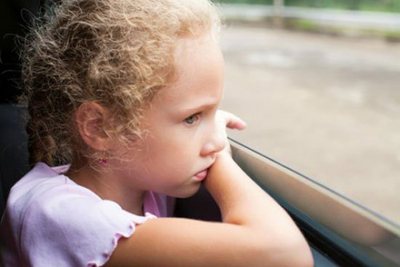
Some psychological theorists and researchers consider adolescent adjustment disorder less of a disease than a stage of personality development. Adolescents may develop adjustment disorder as part of a defense mechanism against dependence on parents. This psychological technique can cause problems in families, and the behavior can be especially damaging when the teen becomes involved in gangs or cults. However, it should be noted that in adolescents, adjustment disorder is classified as a mental illness.
Psychologists divide adjustment disorder into subgroups based on specific symptoms.
Subscribe to our YouTube channel!
Depressive adjustment disorder
The subgroup is characterized by a feeling of sadness or hopelessness of varying degrees on the part of the child. However, depression usually affects a child's ability to perform functions, such as going to school. Sad feelings are sometimes accompanied by feelings of anger or disappointment. It is important to note that although depressive adjustment disorder is less common among children, when it does occur, suicidal ideation and even suicide attempts can occur. This type of child adjustment disorder requires careful monitoring and involvement of a mental health professional.
Anxiety adjustment disorder
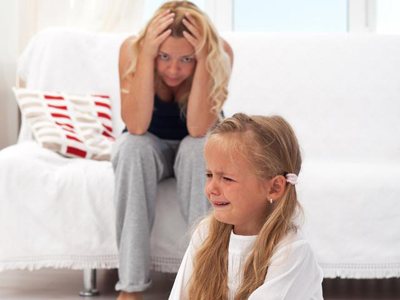
This form of the disorder typically involves agitated or nervous behavior and/or obsessive anxiety. The child may feel or express fear, mixed anxiety and depressed mood. This condition combines the symptoms observed of adjustment disorder with depression and anxiety.
Adjustment disorder with behavioral disturbance
Behavioral signs of this childhood adjustment disorder include primarily actions that show disregard for rules, laws, and the rights of others - fighting, vandalism, truancy from school and reckless driving (in teenagers).
Adaptation disorders in children
The term “adaptation” is a biological concept in relation to all living organisms and is used in two meanings: as a property acquired during evolution, contributing to the preservation of life, offspring and the species itself, and as the process of acquiring such a property. In relation to humans, adaptation is the morphophysiological and psychological adaptive reactions of the body to changing specific conditions of existence, aimed at maintaining homeostasis and social activity. There are different types of adaptation: physiological (adaptation to height, weightlessness, eye adaptation, auditory adaptation, etc.) and socio-psychological (family, school, industrial, etc.). This article will focus on disorders of socio-psychological adaptation, or mental maladaptation, in children. The autonomic nervous system (ANS) in interaction with the limbic system, cortical structures and a number of endocrine glands (pituitary gland, adrenal glands, etc.) takes a direct part in adapting the body to changing conditions of the external and internal environment, regulating the response to any stressful influences. The functions of the limbic system are closely related to the control of mood and affect and depend on the state of central nervous system mediators, in particular monoamines. External stimuli coming from the environment provoke the activity of the limbic system, which causes certain emotional reactions: anxiety, fear, fear, etc., which, if adaptation is disrupted, become protracted. The consequences of such changes are manifested in dysfunction of the ANS, which controls the internal activity of body functions at a subconscious level. Under stress, along with high activity of the sympathetic nervous system, the activity of the pituitary gland and adrenal glands increases, catabolism increases, energy resources are mobilized, and corresponding shifts in homeostasis, cardiovascular, respiratory and other systems occur. The balance between the organism and the environment, achieved in the process of social adaptation, does not represent a static state. Light shifts at the homeostatic, somatovegetative, emotional and behavioral levels are a normal reaction of the body’s adaptation to changing stereotypes and are short-term in nature. Adaptation reactions that persist after these periods can already be classified as disturbances or adaptation disorders. Maladaptation can occur as a result of short-term and strong environmental influences on a person or under the influence of less intense but prolonged stress [6,7,11,14,21]. In childhood, stress factors most often include unfavorable conditions in the family (loss of loved ones, asocial families, cold, cruel relationships, single-parent families, etc.), leading to emotional deprivation. In addition to these reasons, in older children and adolescents, stressful situations are associated with conflictual relationships with parents, peers, and teachers. In groups of children who live in difficult living conditions (for example, living in an unsafe, dysfunctional place) or face medical problems, natural disasters, adaptation disorders were diagnosed in 40–50% of them. An important role in the occurrence of adaptation disorders is played by individual predisposition, or biological vulnerability, which depends on genetic factors. Also important are the insufficiency of development of age-related social skills, lack of individual experience, difficulties of adaptation, social origin, and gender. It has been noted that females are at higher risk of adaptation disorders than males, even in childhood [1,6,10,16,19]. Adaptation disorders are a maladaptive response of the body to clearly detectable psychosocial stress, usually diagnosed after the first month of stress and lasting up to 6 months. [15,17,19]. Disorders typically subside soon after the stress ends or, if the stress remains, a new level of adaptation is achieved. Persistent after 6 months. emotional and somatovegetative disorders already belong to post-traumatic stress disorders or somatoform (psychosomatic) disorders. Adaptation disorders must also be distinguished from acute reactions to stress (for example, an accident, death of loved ones, natural disaster, etc.). Unlike affective-shock reactions, psychogenic, stress factors in adaptation disorders are not acute, unexpected, but are extended over time, as a result of which they become available for personal processing and are influenced by psychological defense mechanisms. The division of these conditions according to chronological criteria is quite arbitrary, since their genesis and clinical picture have many similar manifestations. In the case of a predominance of clear and persistent depressive symptoms, anxiety, fears or behavioral disorders, they should be classified as “emotional and behavioral disorders, usually beginning in childhood and adolescence”, “mood disorders” or “anxiety-phobic disorders” [15,17 ]. Adjustment disorders are included in category F43.2. According to ICD-10 and DSM-1Y, these are states of subjective distress and emotional disturbances that interfere with social functioning and productivity and occur during the period of adaptation to a significant change in life, stress. Thus, disorders under this heading can be considered as impaired adaptive responses to prolonged stress, in the sense that they interfere with the functioning of the mechanism of successful adaptation and therefore lead to impaired social functioning. In the structure of adaptation disorders, vegetative (somatic) syndromes are usually combined with depressive, anxiety and behavioral symptoms. Depending on their combinations, ICD-10 identifies several variants of adaptation disorders with an additional fourth character. Despite the classification of these conditions as a psychiatric category, children with such complaints turn primarily to pediatricians and pediatric neurologists. Clinical manifestations of maladjustment are extremely variable. The most common symptoms in adults and children are depressive, anxiety, somatovegetative and mixed symptoms. These include: depressed mood, sadness, anxiety or restlessness; a feeling of inability to cope with life or professional tasks or plan for the future; a feeling of being unable to continue daily activities or studies in the current situation and associated behavioral disorders. Anxiety often manifests itself as a diffuse, extremely unpleasant, often vague feeling of fear of something, a feeling of threat, a feeling of tension, increased irritability, and tearfulness. Against the background of low mood, there is a limitation of usual interests and desires, mental and physical exhaustion, decreased concentration, and memory deterioration. Very often, in children, psychopathological symptoms are hidden behind a “facade” of massive autonomic dysfunction [1,7,10,16,22,24]. Emotional stress constantly experienced by children of preschool and school age often leads to psychosomatic disorders: headaches and abdominal pain, cardialgia, arthralgia, breathing disorders, tachycardia, unpleasant sensations throughout the body, for which children are often examined in somatic hospitals. Decisive in the diagnosis and treatment of adaptation disorders is the doctor’s ability to recognize psychopathological symptoms in addition to somatic disorders. The severity of adaptation disorders in children depends on the age and level of maturity of the child: physical, mental and social. The two-way connection between the mind and body in childhood is much closer than expected. The younger the children, the more obvious this connection is. In fact, every sick child, suffering from somatic diseases, simultaneously suffers from neuropsychic disorders: reaction to illness, taking medications, injections, changes in life pattern, in some cases, to hospitalization. Young children are characterized by a somatovegetative level of response, which is manifested by sleep disorders, eating disorders, weight loss, frequent illnesses, etc. With maladaptation in children, neurosis-like and neurotic disorders are often observed in a combined or isolated form: neuroses of obsessive states and movements (tics, coughing, breathing rhythm disturbances, nail biting, etc.), disturbances in the rate of speech (stammering), stuttering, enuresis, sleep disturbances, appetite. Asthenic conditions (low performance, increased fatigue, etc.) and decreased immunity often develop. Adaptation disorders are characterized by the development of behavioral disorders and pathological reactions, the clinical manifestations of which are largely determined by age. Children of preschool and school age are predominantly characterized by reactions of active and passive protest (opposition), refusal, leaving home, and mutism. Protest reactions often occur in the form of a violation of somatovegetative functions (vomiting, enuresis, encopresis, refusal to eat), often in combination with behavioral disorders. Reactions of imitation, compensation and overcompensation occur less frequently. Reactions of emancipation and grouping are more typical for adolescents. This desire to free ourselves from the care of relatives, educators and all adults is expressed in the form of hidden or open resistance to orders, attempts to escape control, and abnormal hobbies [7,10,16,24,25]. Children are most vulnerable to adaptation disorders during periods of age-related crises (3–4 years, 7–8 years, puberty), which coincide with changes in children’s life patterns: entry into kindergarten, school, college, etc. Deep physical, hormonal, psychological and social changes that occur during puberty are also often accompanied by adaptation disorders. In many cases, a stressful factor for children is separation from the family due to the child entering kindergarten and school [3,11,14,21,28]. Currently, the family has become nuclear, i.e. consisting of one child and parents, often incomplete. In this regard, a child limited by the family has fewer opportunities to adapt to life outside the family, especially if he did not attend kindergarten. The period of schooling is a qualitatively new stage in the socialization of children. These are not only new contacts, relationships, responsibilities, a new student status, but also fundamentally new operating conditions, greater physical (primarily static), emotional and mental stress. The optimal age for entering school is considered to be not 6 years (as of September 1), but 6.5–7 years. The year separating a 6-year-old child from a 7-year-old child is very important for physical, functional and mental development. According to psychologists, it is at this time that many psychological new formations are formed: mechanisms for regulating behavior, orientation towards social norms and requirements, self-esteem, etc. The cerebral cortex matures intensively, all cognitive functions develop (primarily organization and voluntary regulation of activity). The most difficult period of psychological and physiological adaptation of first-graders lasts 4–6 weeks, and for weakened ones – up to 8 weeks. [18,19,20,25]. Problems that arise in children in connection with learning have received a common name, proposed by psychologists and teachers, as school maladaptation (SD). Among its main primary external signs, doctors, teachers, and psychologists unanimously include learning difficulties and various violations of school norms of behavior. There are several approaches to the interpretation of the concept of school maladjustment by different specialists: medical-biological, pathopsychological, which considers SD as a pathological development of personality, and a socio-pedagogical approach, in which the basis of the problems is considered to be a violation of the interaction between the child’s personality and the school environment [12,13,20 ,21,23]. Some psychiatrists suggest using the term “school maladaptation” in the meaning of “the process of reducing and disrupting a child’s ability to learn due to a discrepancy between the conditions and requirements of the educational process, the immediate social environment, and his psychophysiological capabilities and needs” [12,13,20,24]. Most researchers agree that SD is a complex multifactorial process that has both medical-biological and socio-psychological-pedagogical foundations [4,9,13,14,21,25,28]. Its structure includes three main components: cognitive (failure to learn subjects according to programs appropriate to the child’s age and abilities), emotional-personal (violation of the emotional-personal attitude towards learning, teachers, life prospects related to studying) and behavioral (repetitive, uncorrectable behavioral disorders). The relative contribution of mental and psychoneurological diseases is quite high and amounts to approximately 50%. These are children with minimal brain dysfunction, hyperactivity disorder and attention deficit disorder, emotional disorders, adaptation disorders, cognitive impairment, and personality anomalies. Often, SD acts as a marker of mental illness in the form of “school phobia” or school neurosis, depressive disorders, therefore, with long-term SD, it is advisable to look for its original cause [2,4,9,21,25]. SD can be both the cause of neuropsychiatric disorders and one of its clinical manifestations [3,6,11,16,19]. Timely identification of personality and characterological characteristics in schoolchildren and appropriate correction could prevent negative reactions of those children who, due to immaturity, irresponsibility, lack of initiative or instability of the nervous system, are not yet ready for school. When posing the problem of treating adaptation disorders, one has to take into account the vagueness of the concept itself, the rapid transition to psychosomatic disorders, as well as the close connection with psychogenic reactions. The main principle of treatment of adaptation disorders is an integrated [1,7,11,16,20,25,27,29,30] approach, because symptomatic treatment gives a temporary effect. Pathogenetic therapy consists of normalizing the disturbed functional relationships of the limbic zone of the brain, the hypothalamus and internal organs. It is based on an individual approach and includes complex drug therapy affecting the somatic and mental components of the disorder and psychological or psychotherapeutic correction. If psychogenic influences predominate on the patient, the impact of psychoemotional and psychosocial stressful situations should, if possible, be eliminated (normalization of family and household relations, prevention and elimination of conflict relationships in the team). Often the most effective is a combination of interventions aimed at the child and his family, as well as systemic psychological and pedagogical measures. Drug therapy primarily depends on the leading symptoms and their severity. In case of predominance of anxiety disorders, including school phobia, drugs with a sedative effect are used, in particular herbal remedies: valerian, motherwort, lemon balm, peony, etc., or tranquilizers, which have a powerful effect on the central nervous system, the cardiovascular system and are capable of, in addition to anxiolytic give antiarrhythmic, hypotensive and analgesic effects, relieve permanent autonomic disorders. Tranquilizers relieve anxiety, fear, emotional and mental tension (duration of therapy - 2-3 weeks). Antidepressants reduce anxiety and depression. “Autonomic correctors” - belloid, bellaspon, bellataminal, normalize the function of both parts of the autonomic nervous system. Adrenergic blockers reduce the increased activity of the sympathoadrenal system. To improve energy processes in the brain and cerebral blood flow, neurometabolic therapy and vasoactive cerebrocorrectors (nootropics, vinpocetine, cinnarizine, etc.) are prescribed. The use of adaptogens is shown, which have a tonic effect on the central nervous system, metabolic processes, the immune system and the body as a whole. A special place in the prevention and treatment of adaptation disorders should be occupied by magnesium preparations, the organic salts of which have long been used in psychoneurological, obstetric and cardiological practice. Magnesium is an essential element in the calcium-phosphorus-magnesium triad, the metabolism of which is closely interconnected. Magnesium is a catalyst for more than 350 enzymatic processes, takes part in the energy metabolism, synthesis of ATP, carbohydrate metabolism, regulates glycolysis, reduces the accumulation of lactate, participates in the construction of bone tissue, provides the functional ability of nervous and muscle tissue. Magnesium is a natural tranquilizer and does not have side effects characteristic of antidepressants and tranquilizers. Magnesium preparations contribute to a pronounced decrease in the excitability of nervous tissue, including the ANS and, as a result, an improvement in the regulation of the function of internal organs. During the growth of the body, especially during periods of growth “jumps”, during illness and recovery, with stress, physical and mental stress, the body's need for magnesium increases. Epidemiological studies [8] showed that 75–80% of the population reveals a deficiency of magnesium, which means that adaptation disorders develop against the background of hypomagnesia, weighting existing disorders. Clinically, magnesium deficiency manifests itself in increased nervous excitability, reminiscent of symptoms of maladaptation (anxiety, uncontrolled irritation, fears, anxiety, motor disorder), a decrease in concentration of attention, a sense of fatigue, and mental overwork. With a deficiency of magnesium, sleep is often disturbed, headaches, pain and cramps in the muscles, arrhythmias appear. The drug Magne B6 is an effective dosage form for the treatment and prevention of adaptation disorders and magnesium deficiency. In combination with vitamin B6, which is necessary for the normal functioning of the central nervous system, magnesium is better absorbed in the intestinal tract, penetrates and retained inside the cell. The ampoule form of Magne B6 provides an increase in the level of magnesium in blood plasma within 2-3 hours, which is important for the rapid elimination of magnesium deficiency, and can be used in children from the first year of life [31]. At the same time, the drug B6 Forte deserves special attention, each tablet of which contains 618.43 mg of magnesium citrate, which corresponds to 100 mg of magnesium (MG2+). Such a magnesium content allows treatment with a drug in children over 6 years old according to a simple scheme: 2–4 tablets per day, divided into 2-3 doses during meals [32]. Almost complete utilization of citrate (transformation into carbon dioxide and water) makes it the perfect carrier of magnesium [33]. Thus, in connection with the great prevalence of adaptation disorders in children, this problem refers to the most relevant in child psychiatry, psychology and pedagogy. Timely detection of mental maladaptation, complex treatment and interdisciplinary interaction can prevent pathological development of the individual and the transition to psychosomatic disorders. Literature 1. Antropov Yu.F., Shevchenko Yu.S. Psychosomatic disorders and pathological familiar actions in children and adolescents // Ed. Institute of Psychotherapy. - M., 1999.– P.297 2. Batygina G.Z. Depressive disorders as the cause of school maladaptation in adolescence: Author. Diss.K.M.N. - M., 1996. - 28s. 3. Bezrukikh M.M. Difficulties in adapting first -graders to school // Management of elementary school. - 2011. - No. 8.– p. 24–31. 4. Butorina N.E., Butorin G.G. Deprivation dysontogenesis and school maladaptation // Russian Psychiatric Journal. - 1999. - No. 3. —s.17–22. 5. Goryunova A.V. Pathogenetic mechanisms of headaches of tension in children. Therapeutic strategy and principles of prevention // attending physician. - 2012. - No. 1. - p.1–8. 6. Guryeva V.A., Makushkin E.V., Vostroknutov N.V. Social factors and mental disorders in children and adolescents // Guide to social psychiatry / Ed. Dmitrieva T.B., Pow B.S. – M.: Publishing house. MIA, 2009. - P.158–173. 7. Guryeva V.A. Psychogenic disorders in children and adolescents. - M.: Kron - Press, 1996. - 208 p. 8. Gromova O.A. Magnesium and pyridoxine: basic knowledge. New technologies for diagnosing and correcting magnesium deficiency. UNESCO training programs. - M.: RSC Institute of Microelements, 2006. - P.3–176. 9. Zavadenko N.N. Hyperactivity and attention deficit in childhood. - M .: Publishing House "Academy", 2005.– 256 p. 10. Isaev D.N. Psychosomatic medicine in childhood: hands for doctors. - St. Petersburg: Special Literature, 1996.– 455 p. 11. Isaev D.N. Emotional stress, psychosomatic and somatopsychic disorders in children. - St. Petersburg, 2005. 12. Jobuk N.M. Psychopathological factors of school maladaptation // Young generation of the 21st century: Actual problems of socio -psychological health: Materials of the II International Congress November 3-6, 2003. - Minsk, 2003.– P. 31–34. 13. Iovchuk N.M., North A.A. Interdisciplinary interaction in rehabilitation work with maladaptated children and adolescents: Methodological recommendations. - M.: MGPPU, 2005 .-- 46s. 14. Zvereva N.V., Kuzmina O.Yu., Karimulina E.G. Pathopsychology of childhood and youth. - M.: Publishing, 2008. - 208 p. 15. Classification of mental and behavioral disorders / Per. in Russian Yaz./ Ed. Yu.L. Nuller, S.Yu. Circular // ICD –10, WHO, Russia. - St. Petersburg: Overlaid, 1994 .-- 300 p. 16. Kovalev V.V. Semiotics and diagnosis of mental illness in children and adolescents. - M: Medicine, 1985. - 285 p. 17. The multi -axial classification of mental and behavioral disorders in childhood and adolescence. WHO; Moscow: meaning, St. Petersburg: speech, 2003. - 408 p. 18. Sabelnikova, S.I. Blocks - modules - a form of organization of the activities of children during the period of adaptation to school // Management of elementary school. - 2011.– No. 8.– p. 24–31. 19. Handbook of psychology and psychiatry of childhood and adolescence / Ed. S.Yu. Kirkina, 2004. - 896 p. 20. Sukhotina N.K. The nervous -psychological health of children in the aspect of school adaptation // Social and Clinical Psychiatry. - 1999. - No. 4.– S. 34–38. 21. Chutko L.S. School maladaptation in the clinical practice of a neurologist. - St. Petersburg, 2005. - 55 p. 22. Shalimov V.F., Novikova G.R., Opinsky E.S. Borderline mental disorders in children and school maladaptation // Russian Psychiatric Journal. - 2001. - No. 4.– S. 26–30. 23. Shats I.K. Clinical, psychological and correctional aspects of school maladaptation in mental disorders in children // Social and Clinical Psychiatry. - 2003. - No. 2.– p. 47–51. 24. Shevchenko Yu.S., Dobrin V.P. Ontogenetically oriented psychotherapy (intake methodology) Practical manual. - M: Russian Psychological Society, 1998.– 197 p. 25. Shmakova O.P. School adaptation of children and adolescents with mental disorders: dis. for the job application uch. Art. Ph.D. honey. Sci. - M., 2004. - 135 p. 26. Yudelson Ya.B., Rachin A.P. Epidemiology of headache in children and adolescents // Zhurn. neurol. and a psychiatrist. - 2004. - T.104; No. 5.– S. 50–53. 27. Childhold Headache /Edited by I. Abu - Arm. - Glasgow, Scotland, 2002. PP 200. 28. Malatestinic D. Assessment of Psychological and Social Factors in Adolescents Risk Behavior: Questionnayir Study // Croat. Med. - 2005. - Vol.46. - No. 1. 29. Larson J., Lochman Je Helping Schoolchildren Cope with Anger. - New York: Guilford Press, 2002.– 190 p. 30. Patricia Casey, Christopher Dowrick and Greg Wilkinson Adjustment Disorders // Brit. J. Psych. – 2001. – Vol. 179. - P.479–481. 31. Instructions for the medical use of the drug Magne B6 solution for oral administration. 32. Instructions for the medical use of the drug Magne B6 Fort. 33. Gromova O.A., Torshin I.Yu., Grishina T.R. World experience in the use of magnesium and pyridoxine citrate // Pharmacle. - 2010. - No. 10.
Treatment of adjustment disorder
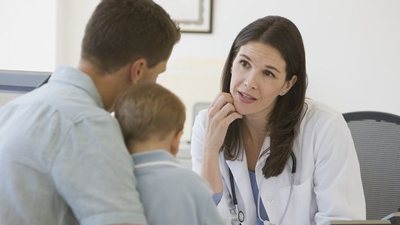
The most important goal in treating adjustment disorders in children is to relieve symptoms so that the child can return to the same psychological level that he had before the onset of the disease. Treatment depends on the age and general health of the child, as well as the severity of symptoms. Drug treatment is used on an extremely limited basis or not at all, since psychotropic drugs are ineffective in treating adjustment disorders.
Age-appropriate cognitive behavioral individual therapy focusing on problem solving, communication, and impulse control is a common component of treatment. Family therapy is recommended to improve communication between a child or adolescent and parents and siblings. Group therapy with peers (other children with adjustment disorder) is often helpful.
Author of the article: Valery Viktorov, Moscow Medicine Portal©
Disclaimer: The information provided in this article about adjustment disorders in children is intended to inform the reader only. It is not intended to be a substitute for advice from a healthcare professional.





